What is Cold Email? An Ultimate Guide for Beginners (2024)
You recently stumbled upon the term “cold email” and are curious to know more about it. Or perhaps you’ve heard about it before but want to understand how it works.
Either way, you’ve come to the right place.
Cold emailing is a powerful outreach strategy that can help you connect with potential customers and generate leads. It’s cost-effective and offers high scalability, making it an ideal approach for businesses of all sizes.
What is cold email – Table of Contents
- What is cold email?
- What is the difference between cold email and email marketing?
- Are cold emails considered legal?
- What are some of the benefits of cold emailing?
- What are the various use cases of cold emailing?
- What is a cold email outreach & how do you do it?
- What are some cold emailing best practices?
- What are some of the best cold email tools?
- Conclusion
- FAQs
Let’s get started.
What is a Cold Email?
“A cold email is an email aimed at gaining a benefit in terms of sales, opportunities or any other dual-sided benefit from someone with whom the sender has no prior relationship or connection.”
Basically, cold emailing is a way to introduce yourself to someone you don’t know and try to build a relationship with them in the hopes of eventually turning them into a customer.
Here’s an example:
You have a software company that sells a powerful data analysis tool to enterprise-level businesses. Many companies could benefit from your software, but you have limited resources to promote it. So, in such a situation, what do you do? How do you reach out to your prospects?
That’s where “cold email” comes into the picture.
It is an effective strategy for reaching new prospects and closing deals. But, many people confuse cold emailing with email marketing. Although both are powerful, their approach and outcomes vastly differ.
Let’s see how cold email and email marketing are different from each other.
Isn’t Cold Emailing and Email Marketing the Same?
No, cold email and email marketing aren’t the same. Both are different approaches to reaching potential customers or clients. The key difference is in the relationship between the sender and the recipient.
Cold emailing involves sending out highly personalized emails to someone you don’t have a prior connection with. The goal is to initiate the contact and try to establish a relationship to pitch the product or service. There are many companies that use cold emails for their sales outreach efforts. Some of the famous brands include:
- HubSpot: HubSpot has a dedicated team to cold email outreach, and they use personalized emails to introduce their software to potential clients. By offering free trials and demos, they’ve been able to convert many prospects into paying customers.
- Dropbox: They use cold emails to reach out to potential users and offer them additional storage space if they sign up through a referral link. This helped Dropbox rapidly expand its user base and become one of the most popular cloud storage providers.
- Grammarly: To reach out to potential users, Grammarly offers free trials to businesses and enterprises. With the help of cold emailing, they’ve been able to generate leads and grow their user base.
Here’s an example of a cold email:
Cold Email Template
{Let’s talk {{First Name}}!
Subject:{Let’s talk {{First Name}}!
Hey there, {{First Name}}
How are you doing today? I am {{Name}} and I work at {{company name}}.
We work with companies like {{their company name}} to:
{{mention pain points and the solutions offered}}
I was wondering if you are the right person to have a conversation with about this? I would love to get in touch with you over the phone, as having an actual conversation could be beneficial.
If you are interested, you can reply to this email and let me know your availability.
Cheers,
{{Your Name}}
In contrast, email marketing involves sending targeted emails to a list of subscribers who have opted to receive your emails. The goal is to build a relationship with the subscribers by providing them value at regular intervals and ultimately converting them into customers. There are many businesses that use email marketing for their inbound sales efforts; here are some of them:
- Airbnb: Airbnb sends out personalized and engaging emails to its subscribers, highlighting different travel destinations and experiences..
- Kate Spade: The fashion brand sends promotional emails that offer discounts and limited-time offers, encouraging subscribers to make a purchase.
- Litmus: The email marketing company sends regular newsletters that provide insights and tips on email marketing best practices.
Here is a quick example on how to approach for marketing your product or service.

Now that we have a basic understanding. Let us see in detail how cold emailing and email marketing are different from each other:
1) The goal
In cold emailing, the aim is to make the initial contact and generate leads from potential customers. Whereas in email marketing, the aim is to build relationships with existing customers, educate them about products or services, keep them up-to-date on the latest offerings, and drive conversions and sales.
2) Level of personalization
Talking about cold emailing, the level of personalization is the highest, as it is done on a 1:1 basis. When we talk about email marketing, personalization is less and may come across as spammy if not done correctly.
3) The frequency of emails
In cold emailing, the number of emails sent to a recipient initially is high, with multiple follow-up emails. When it comes to email marketing, the number of emails sent depends on a case-to-case basis, typically 1-2 emails per week or month.
4) Metrics and KPIs
In cold emailing, the focus is on email deliverability rates, open rates, response rates, and click-through rates. In contrast to this, in email marketing, the focus is on open rates, click-through rates, conversion rates, and revenue generated.
5) Usage of tools
For cold emailing, the tools used are for finding prospects, building lists, verifying email addresses, email warmups, scheduling, and follow-ups. Whereas in email marketing, the tools used are for managing the subscription, creating email content, and analyzing the campaign performance.
From the above, it is clear that cold emailing is a strategic approach to reaching potential customers. In comparison, email marketing involves sending promotional emails to existing customers. Unlike cold emailing, the recipients have given their permission to contact them.
Now you might have this question, as we contact recipients without permission, does that mean sending cold emails is considered spam or illegal? Let us find out.
Is it Legal to Send Cold Emails?
Generally, cold emails are considered legal. But the legality of it depends on the laws and regulations of the specific country or region.
For example: In the United States, the CAN-SPAM Act sets the requirements for commercial emails, including setting clear email opt-out mechanisms and having accurate information, among others. Failure to comply can result in penalties.

As long as your outreach strategy complies with the relevant national and state spam laws, cold emailing is 100% safe and legal. It is important to understand the regulation of the sender as well as the recipient’s country before hitting the send.
It should be obvious by now that cold emailing is not spam, and it is considered legal. Let’s discover why it is so effective.
What are some of the benefits of cold emailing?
If you are trying to reach potential customers, cold emailing can be an effective strategy for your business. Here are some key benefits of cold emailing:
- Targeted: Cold emailing allows you to target specific individuals or businesses you believe could benefit from your product or service. You can personalize your message to each recipient, increasing the chances of a response.
- Scalable: Cold emailing is a scalable method of reaching potential customers or clients. You can send hundreds or even thousands of emails at once, reaching many potential clients quickly.
- Cost Effective: Unlike traditional marketing and sales methods, you do not need to spend much on advertisements or referrals. All you need is an email address and a well-crafted message.
- Better ROI: If done correctly, cold emailing can provide a better return on investment (ROI) than other outreach methods. You can easily track your open rates, reply rates, and conversion to determine the effectiveness of your campaign and make adjustments as needed.
By now, you have understood the benefits of cold emailing and how effective it is. Let us find out what are the various use cases of cold emailing and how you can make the most out of them.
What are the Various Use Cases of Cold Email?
There are multiple use cases for sending out cold emails. The actual use case may differ based on your requirements. Here are some of the most common use cases of cold emailing:
1) Lead generation
Cold emailing can be an effective way to generate leads.
An example can be, let’s say, you run a B2B software company, and you’re trying to generate leads for your product/service. You can research your target audience and prepare a list of prospects. Once you identify the needs of your prospects, you can craft a compelling message and pitch your services to them.
This way, you can reach out to hundreds of thousands of prospects with targeted messages and generate unlimited leads. You start with building a relationship and slowly move towards converting them into valuable customers.
Here’s an example of a cold email for lead generation:
B2B Cold Email Template for Lead Generation
10x your sales this quarter!
Hey there {{First Name}},
I have an idea that I would like to share that can help {{company name}} accelerate their sales this quarter.
I recently helped another one of our clients {{SaaS company name}} almost quadruple their sales using this idea!
Let’s schedule a quick call sometime next week, {{First Name}}, so I too can share this idea with you. Which day and time works best for you?
Regards,
{{Your Name}}
2) Business partnerships
Cold emailing can also be used to establish partnerships with other businesses. This involves reaching out to potential partners and explaining how your company can benefit theirs.
Let’s say you run a digital marketing agency specializing in social media management and want to partner with popular influencers in your client’s niche. You can start by researching influencers in your desired industry and creating a list of potential partners.
Once done, you can start reaching out to them via email with a compelling offer, ultimately closing the deal. A well-written cold email can start a conversation that leads to a mutually beneficial partnership.
Here’s an example of a cold email for business partnerships:
Business Development Partnership
Something new for {{Company Name}}!
I am {{Your Name}}, the CEO and founder of {{Your company name}}, {{mention what you do}}.
I’ve been following your company's work for a few years now, and I love {{mention something you love}}. I am emailing you because I believe the partnership between our two brands can help [[increase sales and build brand awareness to various target markets]].
Is this something you would be interested in? Please let me know if you would like to discuss this further over the phone.
Looking forward to hearing from you.
Thanks!
{{Your Name}}
3) Networking
With cold emailing, you can expand your professional network. You can contact people you admire or want to work in your industry or related fields.
Here’s an example, you want to network with others in your industry whom you have just connected at a webinar or a seminar. You can start by visiting their website, finding their email addresses, or using a third-party tool and creating a list. Once done, you can send them targeted and personalized emails and build connections.
A personalized and thoughtful cold email can help you establish connections and potentially lead to future collaborations.
Here’s an example of a cold email for networking:
Networking Template
Breaking the ice, let’s get to know each other!
Hi there, {{First Name}}
I noticed both you and I are members of the [[LinkedIn Group - name of the group]]. They recently hosted a [[webinar]] on {{Topic}} and I saw you attending as well!
Looks like we’re both interested in {{Shared interest}}. What do you think of the latest {{Something new about shared interest}}?
I recently came across this [video] that I think you will like!
Anyways, I hope you had a chance to check my previous email(s).
Let’s talk!
Warm Regards,
{{Your Name}}
4) Link building
You can use cold emailing to acquire links for your website. Basically, you need to identify websites that are relevant to your niche and then reach out to them with a personalized pitch about why they should link to your website or content.
For example, you are in the business of selling eco-friendly cleaning products. You recently published a blog post on the benefits of using natural cleaning products, and now you want to build links for that article.
To find potential link targets, you need to start by searching for related terms in your niche and identify a list of websites to get a link from. Once done, you can start building a list of people who would be best to pitch for a link.
By crafting a personalized, relevant pitch and reaching out to the right people, you can increase your chances of acquiring high-quality links that will help boost your SEO efforts.
Here’s an example of a cold email for link building:
The “Link Builder” Template
Impressed with your new blog!
Hey there {{First Name}},
I recently had the opportunity to read your {insert title}, and thought it was very interesting and intricately put together.
Hence, I suggest adding the link to {insert title of blog} to help your readers better understand the message you’re putting forth.
This can enhance your overall article piece by adding key information for your readers.
This will in turn decrease your bounce rate and increase the average session time (and so many other metrics that we’re happy to discuss with you!).
We’re more than happy to add links from your blogs/website to our blogs too.
Let me know if you are open to this collaboration.
Best,
{{Your Name}}
5) Recruitment
You can also recruit potential employees by cold emailing. This involves reaching out to people who may be a good fit for a job opening at your company.
An example can be you are a hiring manager for a software company looking for senior engineers. As an HR, you have identified & created a list of a few qualified candidates, but they aren’t currently looking for a new job.
To reach out to them, you can draft a personal cold email letting them know about your company and the position. You can also highlight how the candidate’s experience and skills match the role and how they can be a great fit for the position at your company.
A well-written cold email can grab their attention and encourage them to apply.
Here’s an example of a cold email for recruitment:
Recruiting Email Template
Interested in joining {{company name}}?
Hello {{First Name}},
How are you doing today? I am sure you get many emails like this!
I recently saw your [[design]] published on {{platform}} and it really caught my attention!
I am part of the recruiting team at {{company name}} and I am reaching out because we have a vacancy for {{job title}}. Given your skills and experience, I know you will be a great fit at {{company name}}.
Here is a link to the job description: {{link}}
I am also linking our company website: {{link}}
Are you interested in this? Let me know.
Thanks,
{{Your Name}}
Now that we have seen what the various use cases of cold emailing are, you might have this question – does it involve just writing an email and hitting send, OR there’s more to it?
Here’s something you should know: it is a delicate art to send cold emails to your prospect, which requires careful planning and execution, what we call a cold email outreach.
You must be wondering, “What the heck is this cold email outreach now?”
Don’t worry; we have got you covered. In the very next section, we are going to see what exactly is cold email outreach and how to do it the best way to achieve your desired goals.
What is a Cold Email Outreach, and How to do it Effectively?
Cold email outreach is a strategic way of sending highly personalized emails to individuals or businesses to grab their interest in your product or service.
Cold email outreach generates leads, builds brand awareness, and converts recipients into paying customers. The key is to craft a personalized and compelling message that resonates with your target audiences and to follow up with them consistently to build a relationship and establish trust.
Now that we know, cold email outreach is an effective way to reach your prospects. It’s important to do it strategically. Here’s a 6-step process on how to do a cold email outreach:
Step 1: Identify your target audience and build an ICP
Start by researching and identifying your target audience, as cold emailing prospects without considering their needs and interests will be ineffective.
According to a Gartner report, only 23.9% of sales emails are opened. Ensuring that your email is sent to the right person at the right time and at regular intervals is important to improve the chances of a response.
By narrowing down your target audience, you can craft emails that are relevant and compelling to each person you want to connect with.
Once you are done with your research part, the next thing you need to do is create an Ideal Customer Profile (ICP) out of it.
An Ideal Customer Profile contains details of the individuals or companies who would benefit from your offerings. It identifies the most valuable prospects and customers who are more likely to make a purchase or close a deal with you.
To create an ICP, based on what you’ve gathered from your research, create a list of key customer characteristics you’d like to see in your prospects. Some characteristics to consider may include:
- Location
- Budget
- Department
- Annual Revenue
- Company size
- Industry, etc.
Here’s what an ICP may look like:
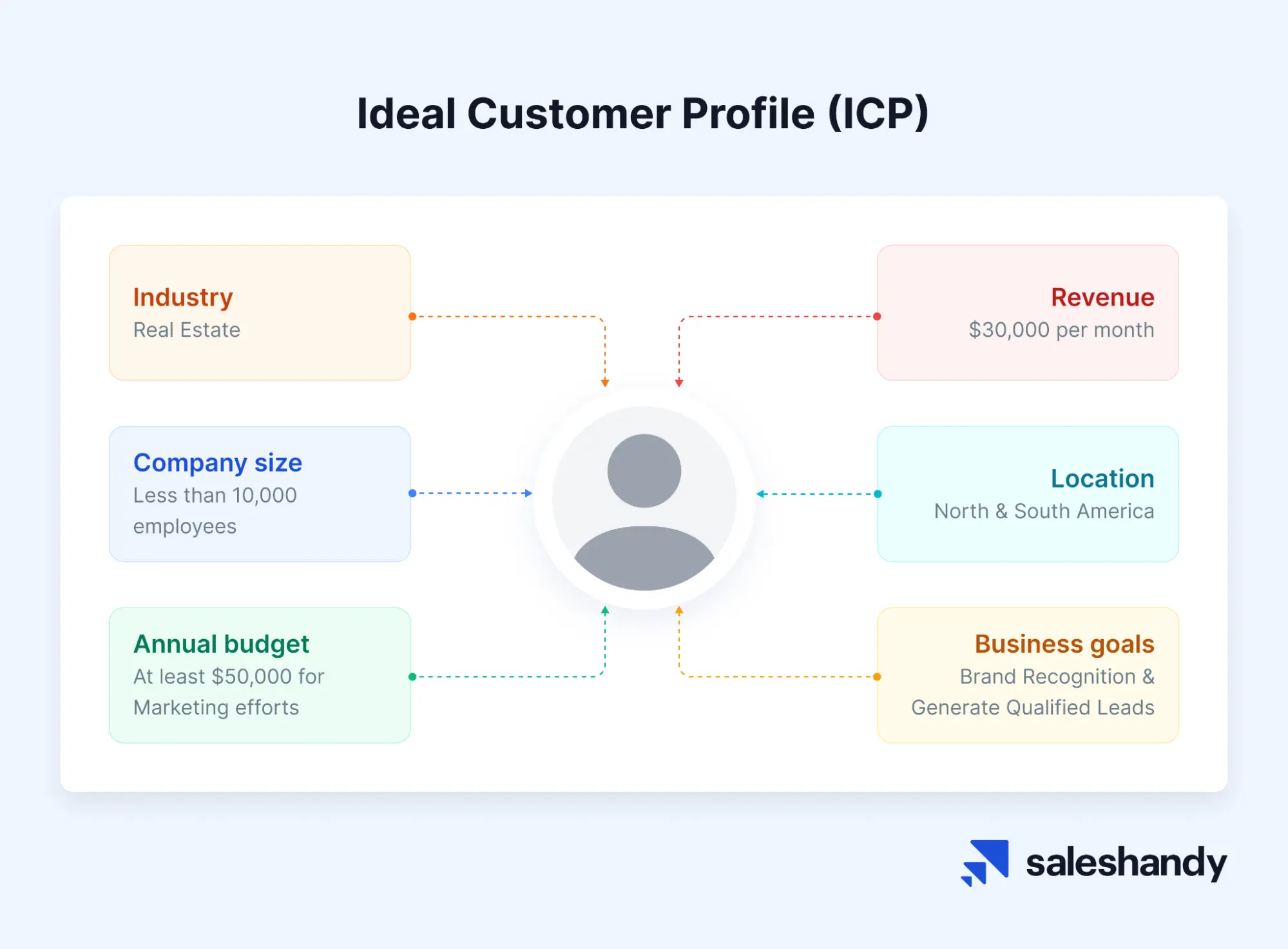
After successfully identifying your target audience and creating an Ideal Customer Profile, the next thing you need to do is to build a lead list based on your ICP for a targeted approach. Thus the next step.
Step 2: Build your lead list
A well-organized lead list can help you manage outreach efforts and increase the chances of converting ideal customers into paying customers.
A lead list is a collection of potential customers which is in accordance with your Ideal Customer Profile (ICP). It typically includes the contact information of your prospects, such as name, email, designation, and company name, among others.
Having a lead list is important because it provides a pool of potential customers that are highly relevant. It saves you time and effort in reaching out to people who are likely to be interested in your offering.
When it comes to building a lead list, there are two approaches: the Trigger/Intent-based approach and the General Prospecting approach. Let’s check each of them.
Trigger/Intent-based approach:
The trigger/intent-based list-building approach involves identifying a specific trigger or intent that indicates that a potential customer may be interested in your offering and then targeting those potential customers with personalized and timed cold emails.
To go with this approach based on your ICP, you need to identify triggers & intents that indicate a potential customer may be in need of your product or service. It can be anything from a company’s recent funding announcement, a change in leadership or designation, or a recent press release (indicating a requirement or launch of a new product or service).
After you identify your triggers, you can set up alerts via a third-party tool (like Google Alerts or Mention) OR extract information from existing databases (like Apollo.io or Lusha). Once you set up trigger alerts Or are done extracting the existing data based on your ICP, compile a list of potential customers (what we call a lead list) to send them highly targeted and personalized cold emails.
Next, let us see what is the general prospecting approach of list building.
General prospecting approach:
In contrast to the trigger/intent-based approach, in this approach, based on your ICP, you look out for potential sources where you can find the contact information. It can be their website, a forum or a community, an existing database, or extracting information manually or using a tool.
After identifying the potential sources, start gathering the contact information for your prospects in a list. This may include email addresses, designation, company, phone numbers, etc. Once you have this information, it becomes easy to reach out to your prospects with highly personalized cold emails.
Those were the two approaches to building your lead list. Now you must be wondering, “But HOW can I build a lead list?” Whichever approach you choose, there are four ways to build your lead list:
1) Manually
Building your lead list manually involves researching potential leads online and creating a list of their contact information, such as their email, job title, and company, among others.
This approach is time-consuming and can be challenging if you’re trying to reach a large audience.
Though, it can be useful if you’re targeting a specific niche or industry where the prospect size is small and want to ensure the quality of your leads.
2) Using Email Scraping Tools
Let’s say to maintain the quality of your leads; you decided to go for the manual method; you can take the help of email scraping tools to fasten your process.
These are automated tools that can help you extract email addresses from websites and social media platforms. They are quite helpful if your prospect size is large to save you time.
However, be sure that some email scraping and extracting tools may not comply with the regulation of your nation or region, so be sure to review them before using them.
3) Opt for Third-Party Databases & Software
Third-party tools and databases can be useful if you are unsure about the regulations in your region. These tools comply with a majority of the guidelines and provide you with access to a wide range of contact information for professionals & businesses in your niche and industry.
Nevertheless, be careful when using these tools and databases since the data they provide isn’t always accurate. This may increase your email bounces and affect your deliverability.
4) Buying a list from the Third Party Provider
Lastly, you can consider buying a lead list from a third-party provider. This method involves purchasing a list of contact information from a provider who specializes in lead generation. While this method can save time and effort, it can also be costly and have the same issue – outdated or irrelevant email addresses.
Whatever the case be, once you have successfully created a lead list, be sure to verify your list, as it is very much important for better deliverability.
Now that we are talking about email deliverability, let us see how to ensure the highest deliverability for your cold email efforts in our next step.
Step 3: Setup & Email Deliverability
Email deliverability setup is important for cold emailing because they directly impact the effectiveness of your outreach efforts. Here are a few crucial things you should consider to ensure better deliverability:
Choosing Domain
Using your primary domain for cold emailing can negatively impact your domain reputation, particularly if you want to achieve a high open and response rate for your emails. In addition to this, having secondary domains and email accounts is crucial for maintaining good email deliverability.
Email Deliverability in cold emailing refers to the ability of your email(s) to reach the inbox of your ideal prospects and not in the spam or junk folder.
Email deliverability is one of the most important reasons for having secondary domains and email accounts. Some emails may flag your account as spam if they come from a single domain or address. This could lead to your primary domain or account being blacklisted if too many emails are flagged as spam from a single account.
Now that you are aware of this, let us see what are some of the crucial things you should remember while purchasing and choosing domains:
- Make sure your domain is unique and stands out from the competitors.
- Check for the ESPs sending limit to see if it aligns with your needs.
- Make sure domains are from trustworthy registrars that won’t misuse your data.
- Look for ESPs that support authentications like SPF and DKIM, which ensures you are a genuine sender, keeping your account safe from spammers.
Once you have chosen your domains, it’s time to warm them up.
Domain Warmup
According to recent research, over 20% of emails fail to reach the recipient’s inbox. One of the major reasons is the lack of email warmup in new accounts.
Email warmup is a process of establishing a reputation for a new email account and gradually increasing the sending limit. The process is simple; it involves sending a small number of emails initially and increasing the number of emails sent each day.
To warm up your email, there are two methods:
1) Manual Method: In the manual method, you have to manually send emails each day and increase the number. It requires a lot of time and effort to gradually increase the reputation of the new account when done manually.
2) Automated Method: The automated method is the most recommended option because it’s an effortless way to warm up your email account. A tool like TrulyInbox can automate your email warmup process, allowing you to grow your email reputation and improve email deliverability. By automating the warmup process, you can save time and effort and focus on other important tasks.
Once your email accounts are warmed up to improve your email deliverability, the next thing you need to focus on is authentication records and technical setup.
Authentication Records (for better Email Deliverability)
When you have a new email account, you must authenticate it and make it deliverability-friendly. You are mistaken if you think that hitting the send button and having a valid email address will ensure your email is delivered successfully.
The lack of primary authentication is one of the reasons that many cold emails land in the spam folders. Here are the most crucial email deliverability records that you must authenticate:
1) SPF
SPF, or Sender Policy Framework, is a security mechanism that prevents email spoofing and confirms that the incoming email is authentic. It works by verifying the DNS records of the sender and recipient, ensuring that the communication is legitimate.
If you want to learn more about SPF and how to set it up, here’s a detailed guide.
2) DKIM
DKIM, or DomainKeys Identified Mail, is another protocol that uses an encrypted signature to verify the email sender’s identity. It also provides the key to the recipient’s DNS server to check back the sender’s DNS record.
If you want to learn more about DKIM and how to set it up, here’s a detailed guide.
3) DMARC
DMARC, or Domain-based Message Authentication, Reporting, and Conformance, lets you specify what receiving servers should do with outgoing messages that don’t pass SPF or DKIM authentication.
If you want to learn more about DMARC and how to set it up, here’s a detailed guide.
Custom Tracking
A custom tracking domain is your own domain that you can use to track “opens” and “clicks” in your emails. Custom tracking is known to preserve the sender reputation, boost email deliverability and also help in improving the click-through rate (of links inserted in emails).
If you want to learn more about the custom-tracking domain and how to set it up, here’s a detailed guide.
Until now, you have successfully set up your account and configured it to achieve the highest email deliverability. It’s time to craft your emails.
Step 4: Write
A well-crafted cold email can capture the reader’s attention, communicate your value proposition, and persuade them to take action. Therefore, investing time and effort into writing effective cold emails is important.
A cold email has 3 important components: the subject line, the preheader text, and the body. Let’s look at each one of them in detail:
Subject line:
A compelling subject line can grab the reader’s attention and entice them to open the email and read further. Crafting a subject line is important because it can determine whether or not your email is opened and read.
A catchy subject line can also make your email stand out from the rest of the emails in their inbox and increase the chances of a response.
Therefore, crafting an effective subject line is crucial for the success of your cold email outreach. But how do you craft a compelling email subject line? Let’s find out:
What is a good subject line for a cold email?
To craft a perfect cold email subject line, it’s important to make sure of the following:
- Keep it short and relevant (less than 60 characters).
- Personalize your subject line.
- Use action-oriented language.
- Be clear and make sure it accurately reflects the value of your email.
- Avoid the usage of spammy words.
Here are a few examples of some of the effective subject lines:
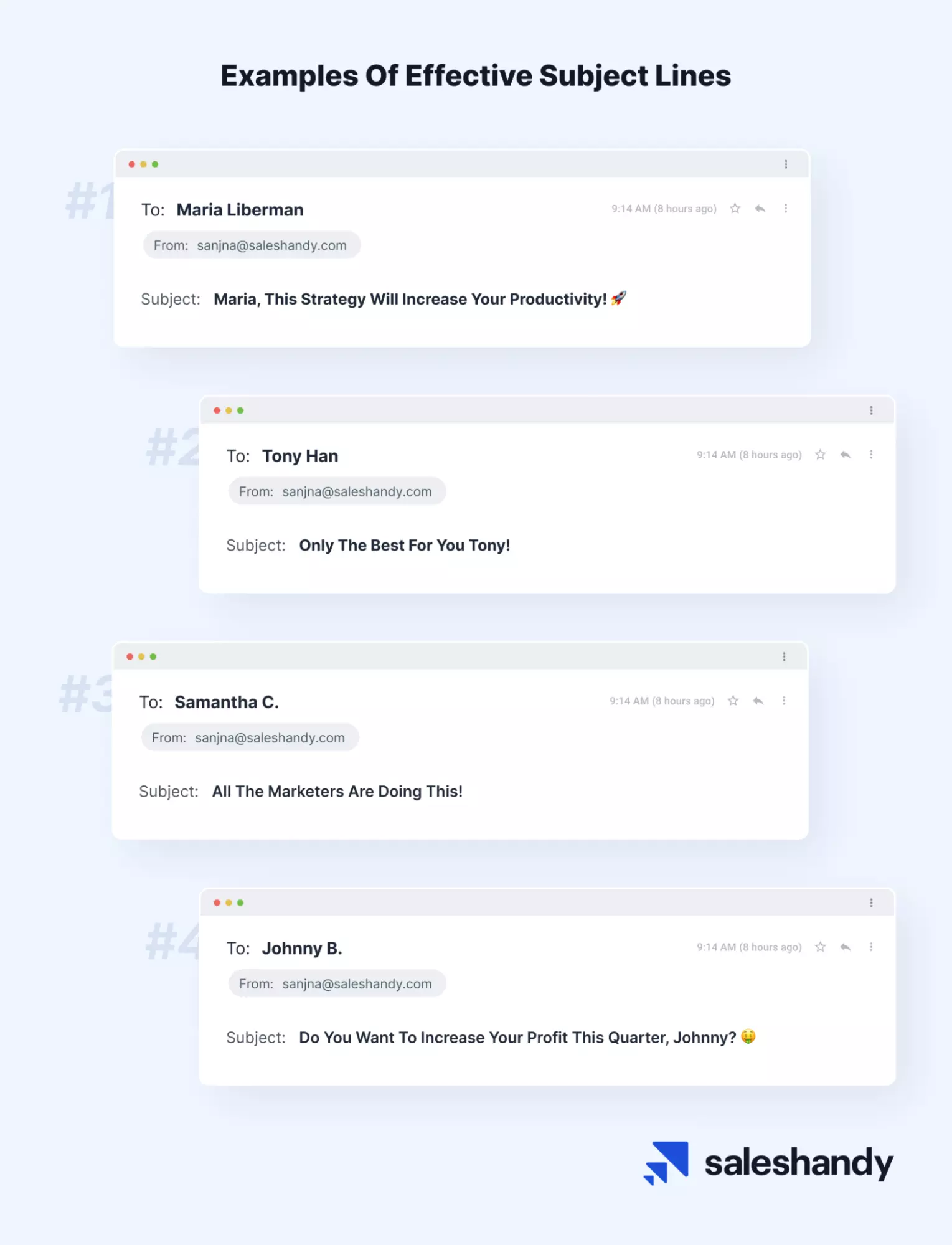
Once you have successfully crafted a compelling subject line, the next thing that grabs a recipient’s attention and entices them to open your email is the preheader text.
Preheader
An email preheader text usually sums up the emails in one line and can be viewed in the recipient’s inbox.
The preheader text is typically next to the subject line. Your prospects can see this text without opening your email.
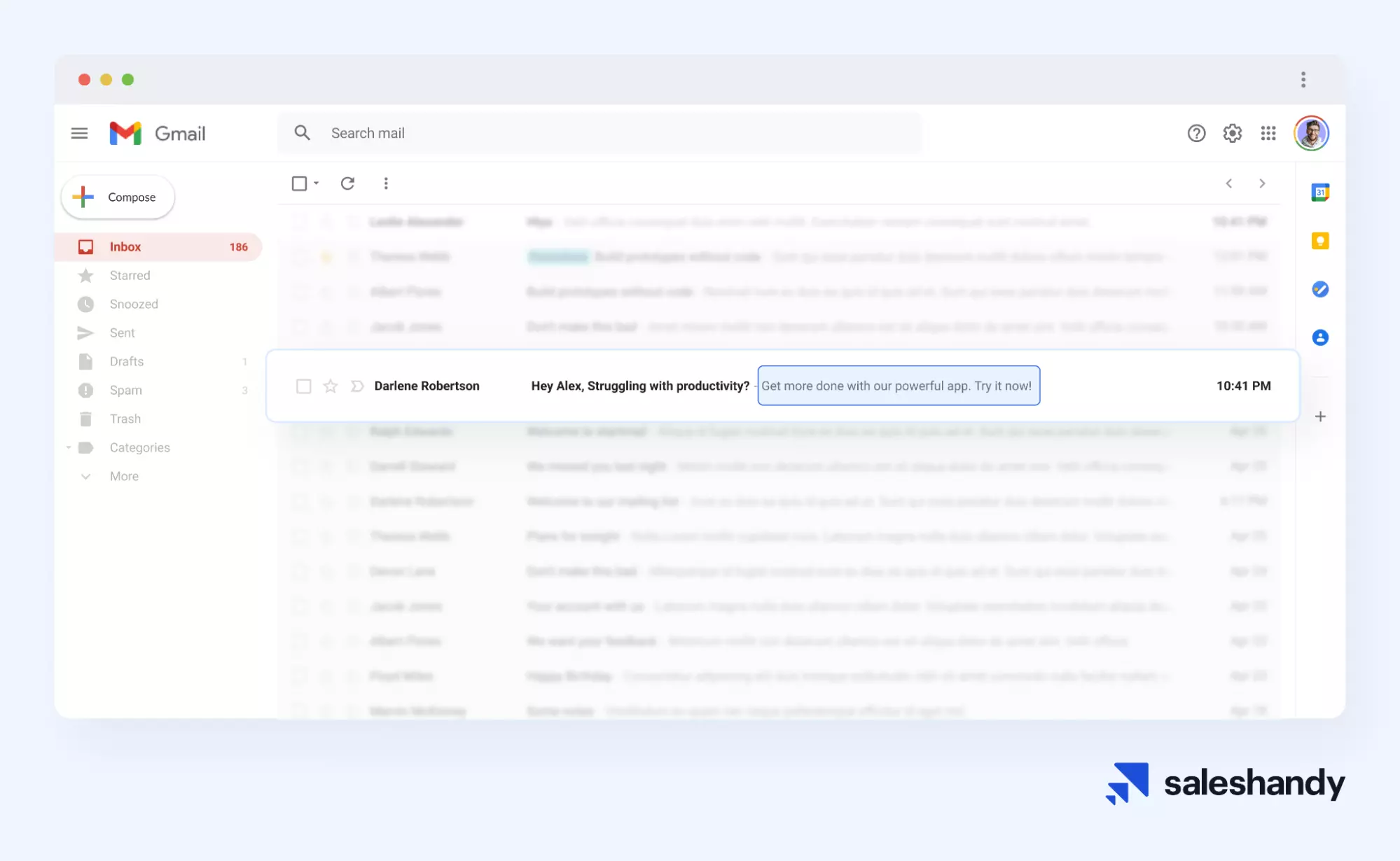
The preheader text should be aligned with your subject line and email content. You can communicate your message directly, but be careful what you write, keeping your ICPs in mind.
The preheader text and subject line should work together to create interest and encourage recipients to open your email. Try to keep your preheader text as short as possible (recommended 30-140 characters).
Body
Once you have crafted a compelling email subject line and preheader text, the body of your email is where you make the pitch and convince your recipient to take action.
There are a few things you should consider while writing the body of your cold email:
- Start with a personalized greeting: Address the recipient by name and use a formal yet compelling tone.
- Introduce yourself and your reason for contacting them: Mention yourself, your company, and why you are reaching out to them. Be clear and specific about your prospect.
- Highlight the benefits for the recipient: Explain how your product/service can help them and what value it can bring to their business.
- Provide social proof: If you have any relevant credentials, experience, or testimonials, include them in the email to establish credibility and trust.
- Call to action: End the email with a clear and concise call to action, such as scheduling a call or meeting.
- Closing: Thank the recipient for their time and consideration, and sign off with a professional and friendly tone.
Here’s an example of perfect cold email content:
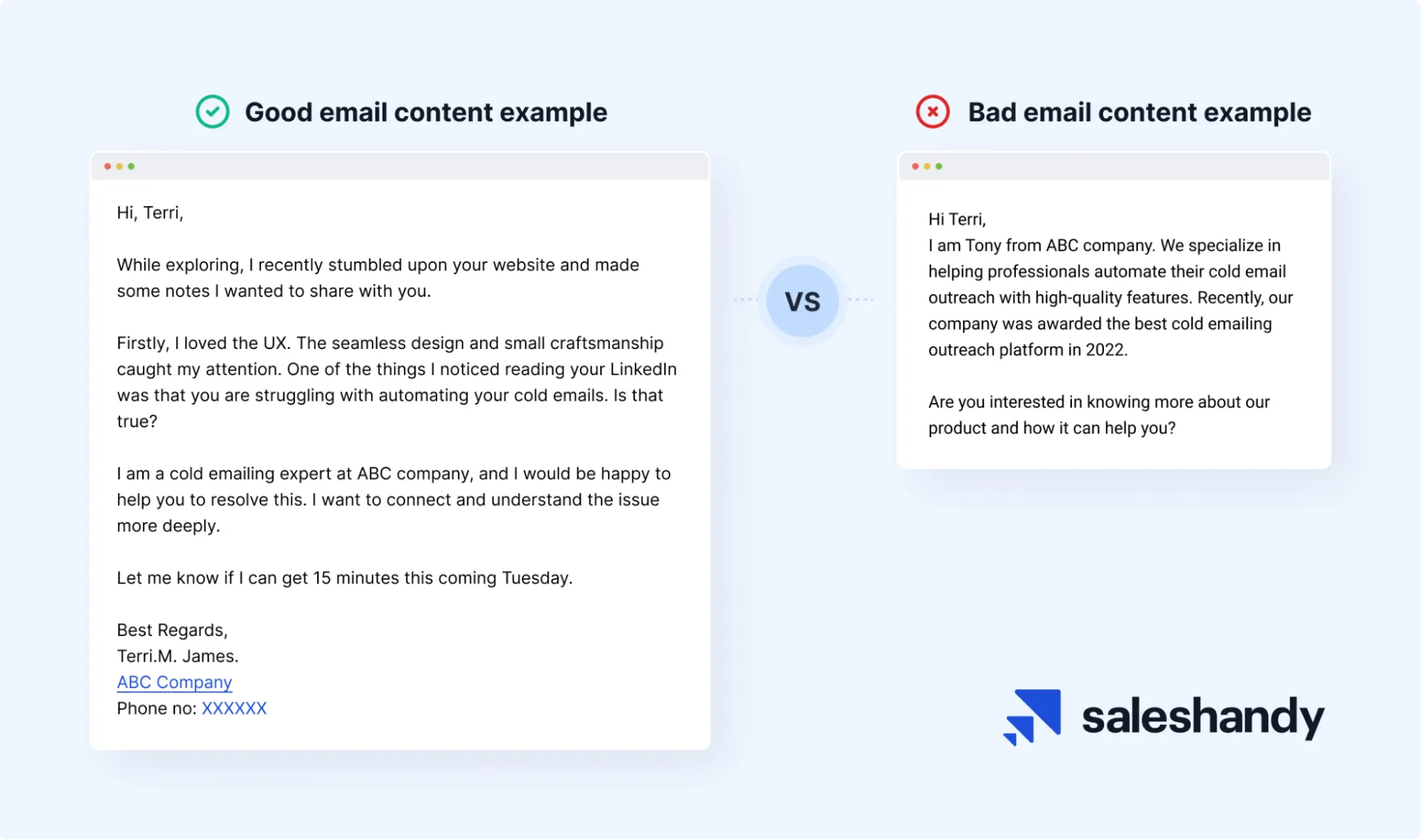
Now that we have seen what to include and say in a cold email. Let us see what not to say and things to avoid in a cold email.
What not to say in a cold email?
There are a couple of things you should avoid adding to your cold email:
- Avoid the usage of spammy words like “Exclusive” or “Offer.”
- Avoid making false promises or claims that you cannot fulfill or back up.
- Don’t forget about the research part while writing your email; your message should be in accordance with what interests the recipients the most.
- Don’t make your email sound robotic, and avoid the usage of overly formal or stiff language.
- Avoid asking for too much too soon before establishing a relationship or demonstrating value.
Once you have crafted and sent the cold emails, it’s time to track and analyze their performance.
Step 5: Analyze
Tracking and analyzing is one of the most crucial steps of your cold email outreach. Based on how your emails are performing, you can make accurate decisions and make changes accordingly. Here are a few metrics you must measure while cold emailing:
1) Deliverability Rate
Email Deliverability in cold emailing refers to the ability of your email(s) to reach the inbox of your ideal prospects and not in the spam or junk folder.
You should be aware that “email deliverability” does not mean “email delivery.” Both are different.
Email deliverability determines whether your email will land in the prospect’s inbox (based on factors like the sender’s reputation, the domain’s reputation, and your domain setup). Whereas email delivery means the number of emails accepted into the prospect’s mailbox.
Here are a few metrics that can help you to decide your email deliverability:
- A bounce rate of 3-5% can compromise your email deliverability.
- A delivery rate of 95% (or higher) is considered good by Email Service Providers (ESPs).
- If you’ve more than a 5% unsubscribe rate, your spam rate increases, and you risk losing your account.
2) Open rate
You can determine whether your emails are being opened by looking at your open rate. The open rate is an important metric to keep track of – to ensure your message is getting across to your readers.
According to recent research, 39% or more is a good open rate for your outreach campaign, and if you hit over 57%, consider your campaign very successful.
Something you should note is that the rate of your email opened might differ from campaign to campaign, and it’s not just limited to this; other factors make a difference in an email’s open rate. So it’s always trying and testing based on your goals.
3) Reply rate
The reply rate refers to the percentage of total emails sent that receive a reply. In order to make it easy to understand, here is an example: If you sent 1,000 emails and got 100 replies, then your cold email reply rate is 10%.
Though no strong/accurate research or survey has been done in the past, according to some cold emailing experts, the average email reply rate ranges between 10-20% of total emails sent.
4) Click-through rate (CTR)
A CTR in cold emailing means a number of people who have taken action (be it scheduling a call or signing up for a product or service, etc.) based on the goal of that cold email.
According to a recent study, the average CTR for cold emailing is 2.3%. Though it may differ from industry to industry, you can consider this a benchmark when starting with cold emailing.
Now that you know what are some of the important metrics you should analyze. Let us see how to optimize your cold email outreach efforts based on the insights gathered.
Step 6: Optimize
After analyzing your cold emailing results, the next step is to optimize and make the necessary adjustments to improve your future campaigns.
Here are a few things you should consider while optimizing your cold emailing efforts:
1) Timing
One of the critical factors to consider when optimizing your cold email campaign is the timing of your outreach. Understanding and finding out what time works best for your target audience and the industry you’re targeting is important.
You might have this question “What is the best time to send a cold email?” The answer is there is NO “one best time” to send a cold email. It will differ based on the prospects and the country you are targeting.
For instance, if your target audience is tech companies, sending your emails on Monday mornings might be the perfect timing. However, if you’re targeting HR professionals, afternoons may work best.
It’s crucial to remember that different industries have different preferences, so it’s advisable to research and test out various times before settling on what works best for you.
2) Email Length
Another crucial aspect to consider is the length of your emails. The ideal email length and the type of content within the email that works best for you may differ based on the preferences of the different industries.
Research has shown that cold emails ranging between 50 to 125 words received the highest response rates.
However, it’s important to test different lengths and types of content to see what works best for your audience and make necessary adjustments.
3) Value
Optimal open rates, but low reply rates indicate that you must rethink your value proposition. To make your offer more relevant to your ICP, restructure and write a new pitch.
Because it’s obvious that if your open rates are high, but your reply rates are low, then your email content is not relevant to your target, whereas it’s the thumb rule that relevance is key in any type of business, even in cold emailing!
Analyzing the results of your cold email campaign and making the required adjustments can help you improve your future campaigns’ effectiveness.
Understanding your target audience’s preferences and then crafting your cold email campaign will result in better response rates and ultimately achieve the desired goals. But wait, your work doesn’t end here. There are certain best practices you should be aware of that can help boost your outreach efforts.
Cold Emailing Best Practices to Achieve the Desired Outreach Goal
By now, you know what cold email outreach is and how to do it effectively. There are certain best practices that you must follow to take your outreach game to the next level:
1) Use multiple email addresses
Using multiple email addresses when sending cold emails is a good practice. You’ll still have other options if one email address gets marked as spam. Multiple email addresses can also help you segment your email list and test different approaches.
Not only this, having secondary domains and accounts can also help you increase your email-sending volume without harming your domain reputation.
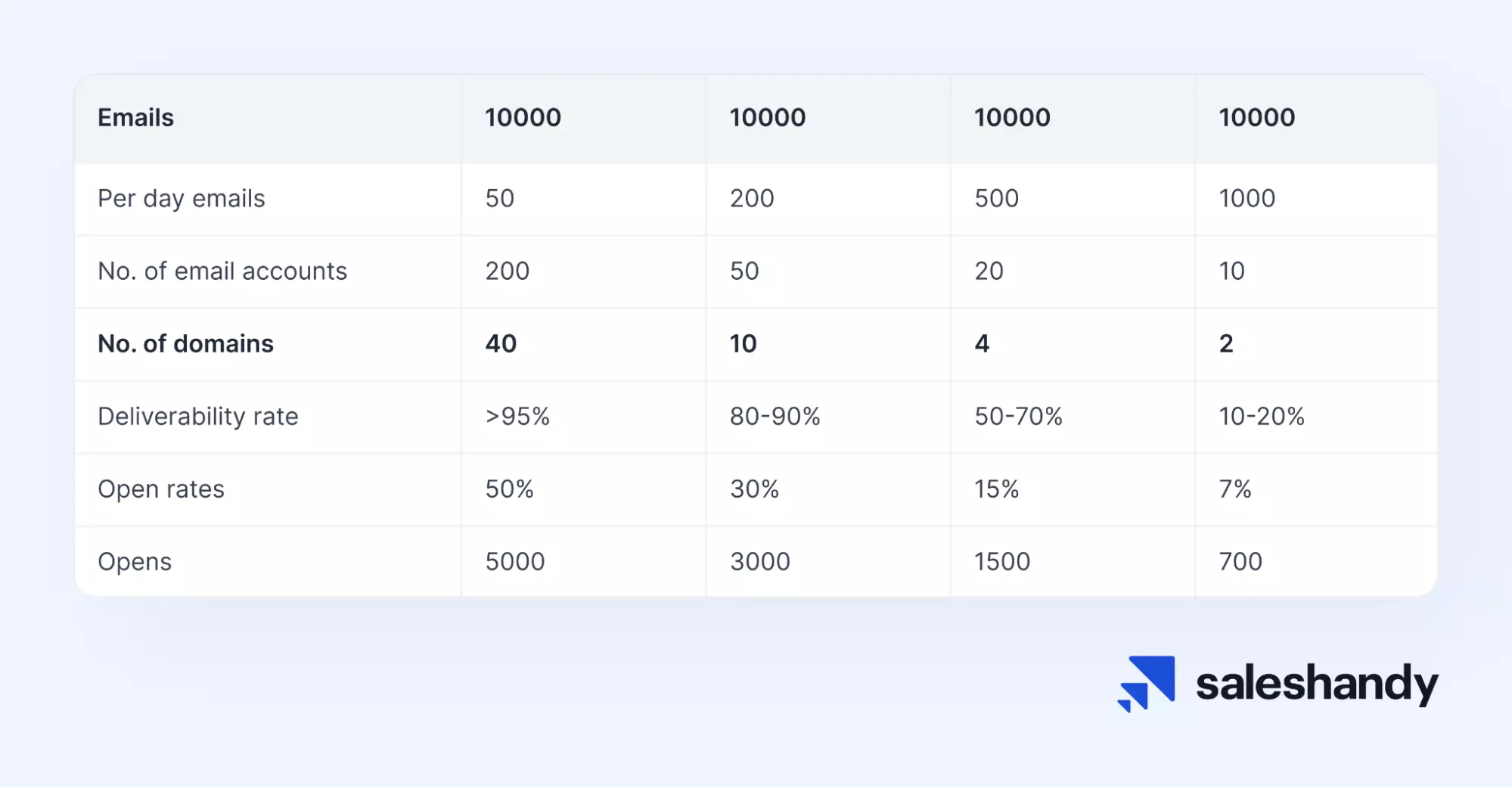
2) Make sure your email list is verified
Before sending any cold emails, make sure your email list is verified. This means, ensuring that the email addresses are valid and the recipients will actually receive the email.
A verified email list can reduce your email bounces and improve your deliverability rates, reducing the likelihood of your account getting marked as spam.
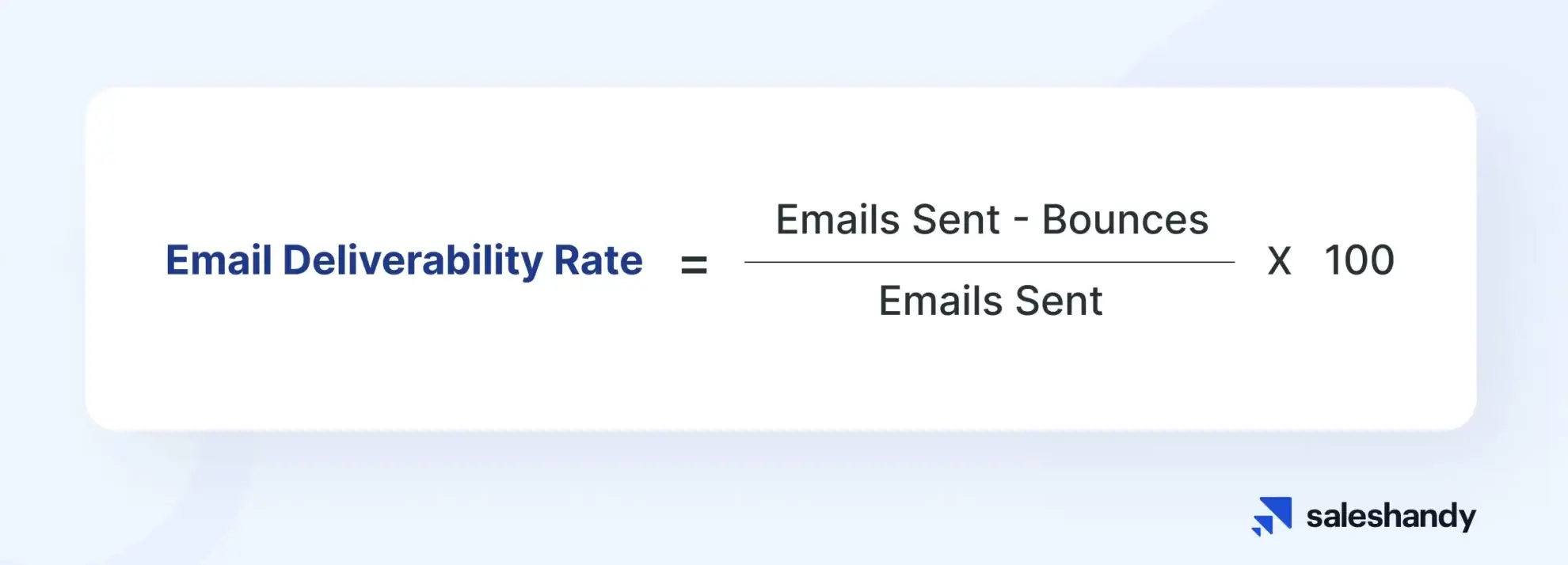
3) Send follow-up emails
Sending follow-up emails can boost the response rate for your cold emails. A courteous follow-up email can be a gentle reminder and enhance the likelihood of eliciting a reply.
There is a possibility that a few recipients missed your first email or were too busy to respond. Thus, you must send at least 5 follow-up emails in the same thread before moving to the next client.
However, avoid being excessively assertive or spamming your recipients with follow-up emails. The goal is to be persistent but not annoying.
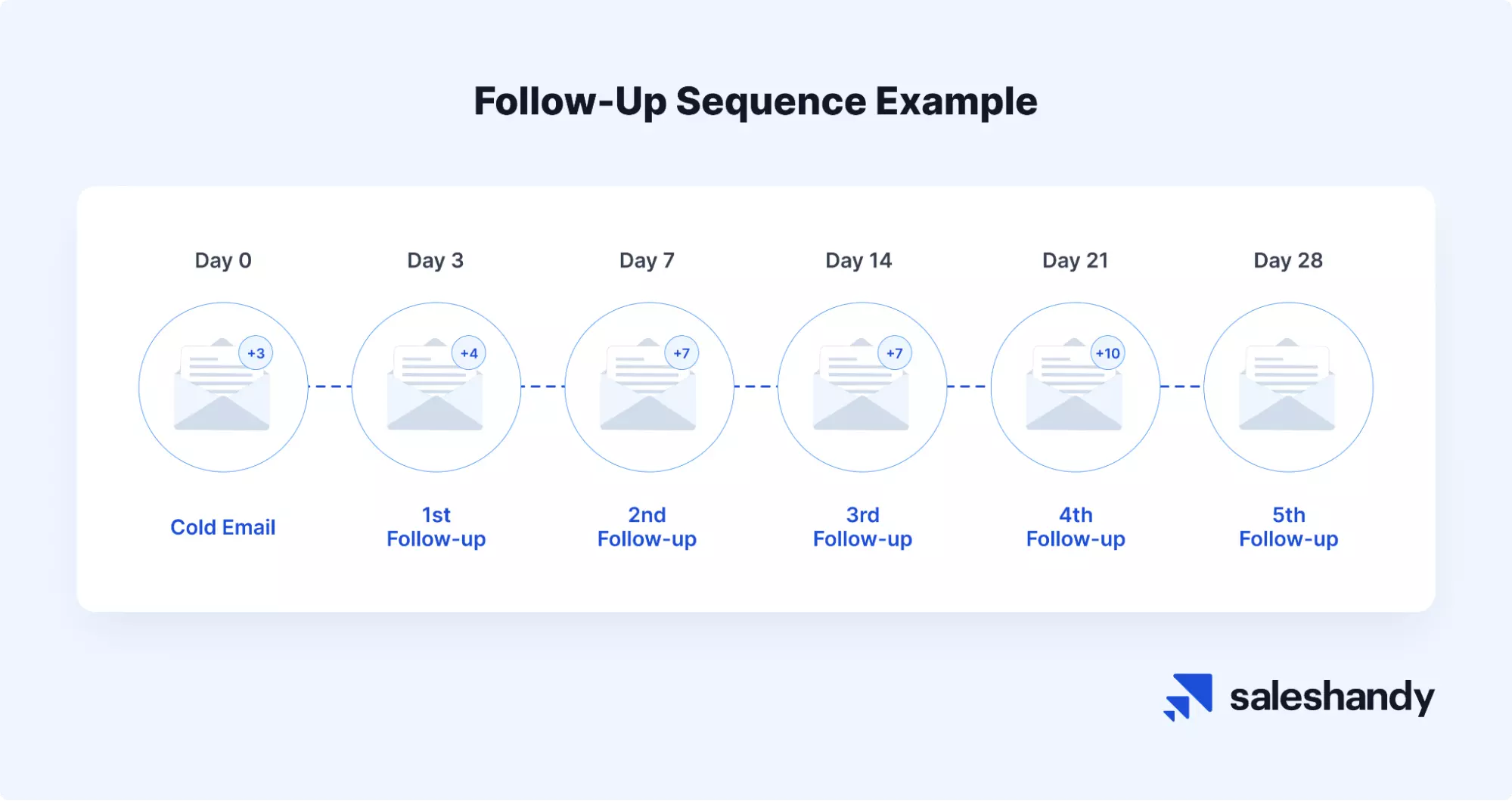
4) A/B Test your emails
A/B testing involves sending two different versions of an email to different segments of your email list to see which one performs better. This can help optimize your cold email campaigns and improve your response rates.
The elements you might test include the subject line, the call to action, the email’s tone, and the email’s length. Something you should know, with Saleshandy, you can’t just do the A/B test but do the A to Z test. That’s 26 variants of your cold email in a sequence.
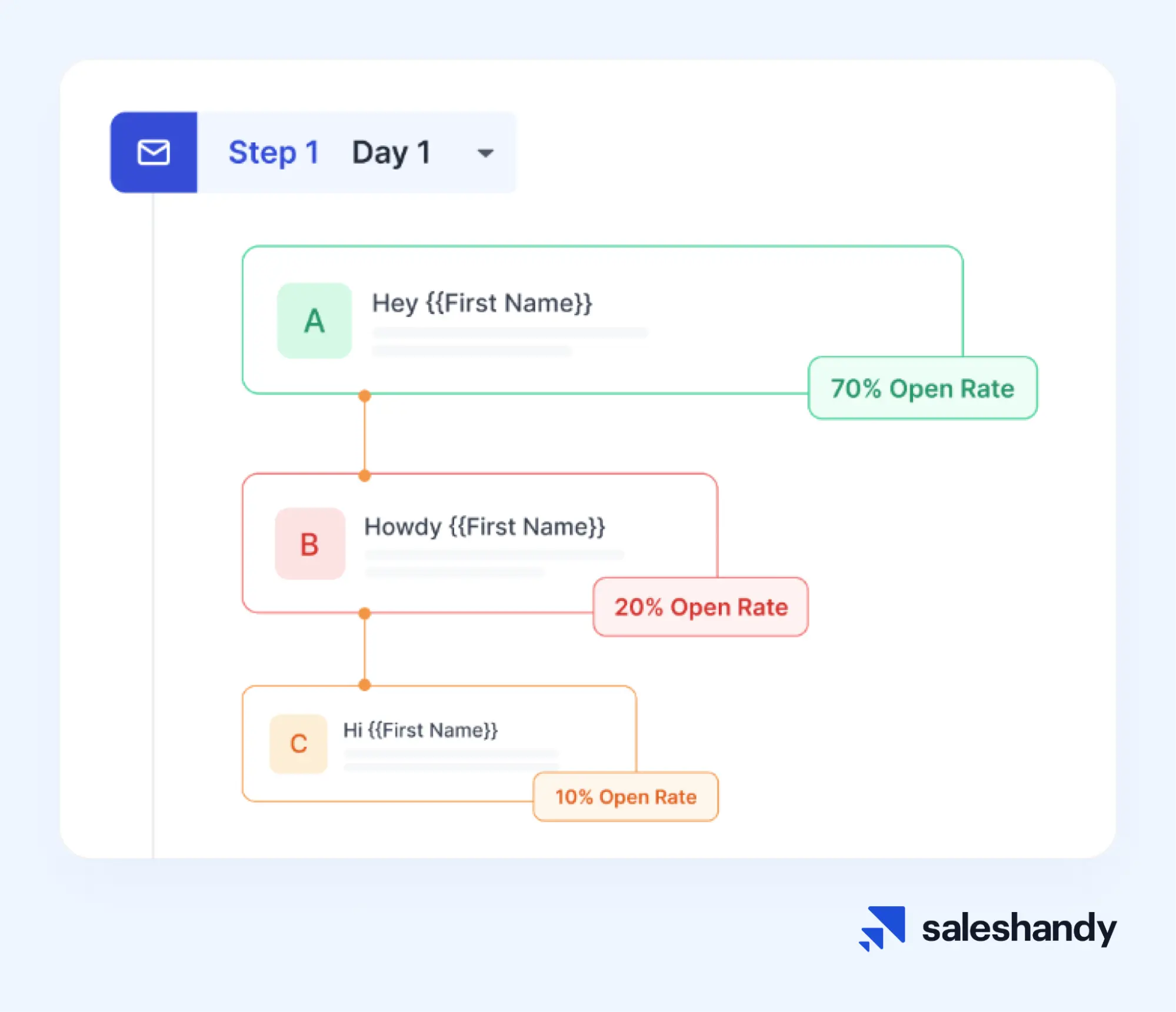
5) Use unsubscribe links
Finally, including an unsubscribe link in your cold emails is important. This allows recipients to opt out of receiving future emails from you and can help you avoid being marked as spam.
Additionally, including an unsubscribe link shows that you respect the recipient’s preferences and can improve your reputation as a sender.
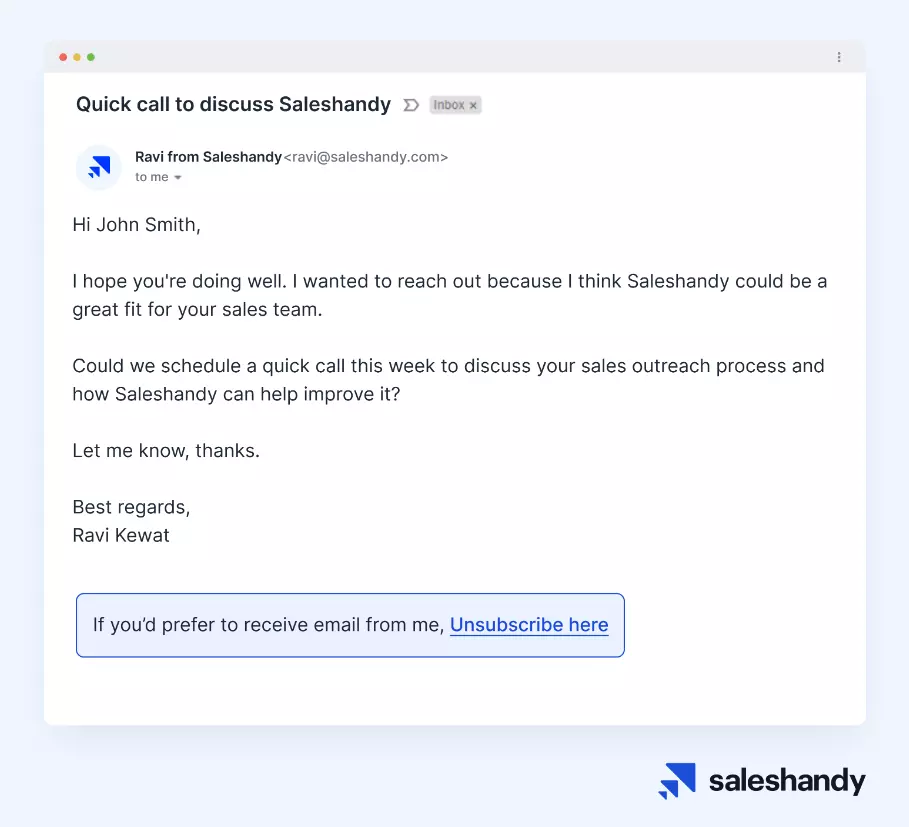
Having looked at some of the cold email best practices, let’s take a look at a few of the best cold emailing tools to streamline your outreach efforts and achieve the desired goals.
What are the Best Cold Email Tools?
A cold emailing tool enables you to carry out your outreach process with ease. It helps you to send cold emails more effectively by automating the entire process for you.
The market is flooded with cold emailing tools; you should choose one that allows you to personalize your emails, schedule your emails, automate the follow-ups and tracking, and easily manage your inbox in one place.
To save you time, we have considered all the factors mentioned above and curated the 3 best cold emailing tools you should consider:
1) Saleshandy
Saleshandy is one of the best cold email automation tools, allowing you to send highly personalized emails at scale with the highest email deliverability.
It sends out cold emails one by one, making them appear to be sent manually, mimicking human-like sending approaches. Also, you can easily manage the number of replies on the email sent using Saleshandy and respond to them from a single place in a unified inbox.
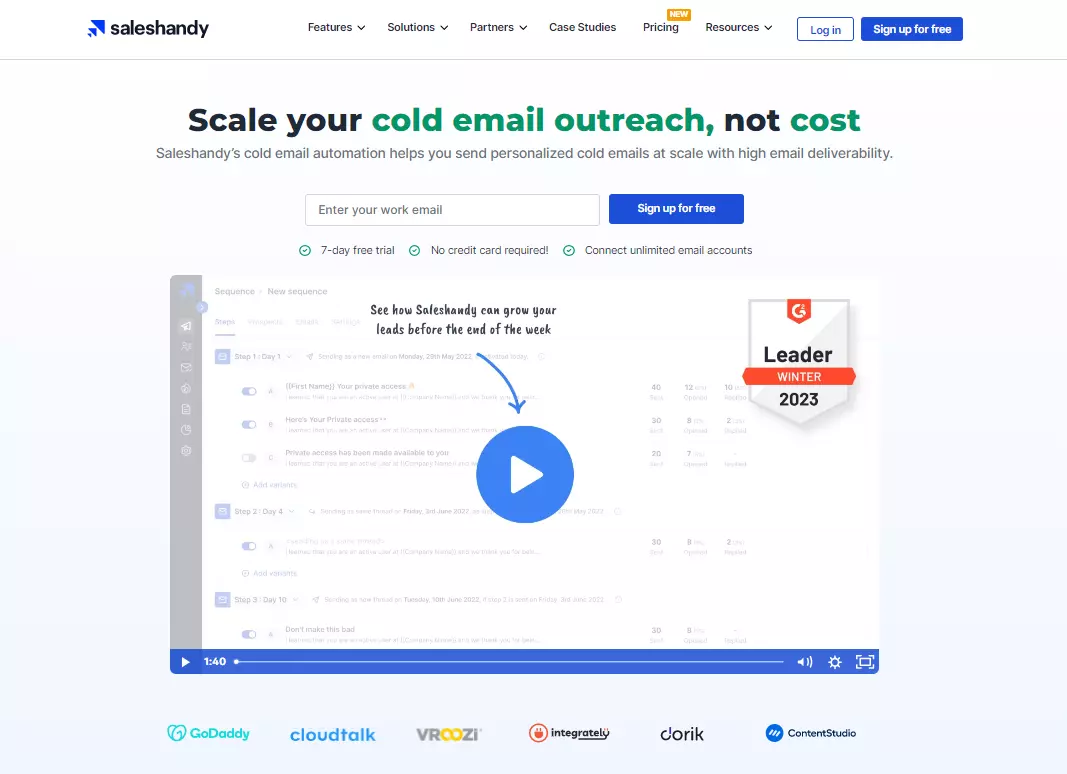
Here’s why you should choose Saleshandy for your cold email outreach:
- Personalization: With Saleshandy, you can easily personalize your cold email with merge tags, such as recipient name, company, job title, etc. This helps you to increase engagement and response to your emails.
- Automation: Saleshandy provides powerful automation features, such as automated follow-ups, email tracking, etc., that saves you time and effort in sending emails at scale.
- Deliverability: Saleshandy uses advanced email deliverability techniques, such as email warmup and custom domain tracking, to ensure your emails are delivered to recipients’ inboxes and not in the spam folder.
- Easy Inbox Management: With Saleshandy, you can keep track of all the responses on your email in a centralized place. The unified inbox feature allows you to manage all the replies in one place and respond to them with ease.
- Cost-Effective and Scalable: Saleshandy is a cost-effective and scalable solution with flexible pricing plans that suit businesses of all sizes and the ability to send hundreds of emails daily without being flagged as spam.
2) Woodpecker
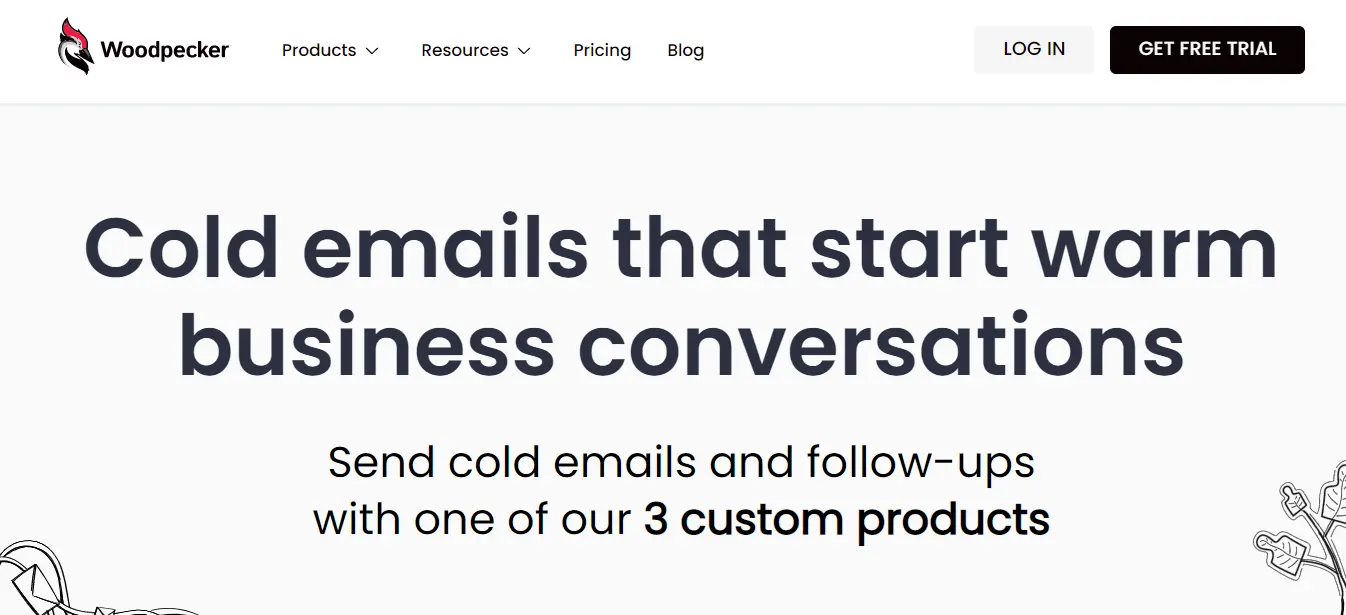
Woodpecker is a great tool for sending automated personalized emails. They claim to be one of the most secure cold emailing solutions for automated campaigns.
In addition, Woodpecker is a great choice for teams that require collaborative tools to share lists of contacts and blacklist domains.
3) Yesware
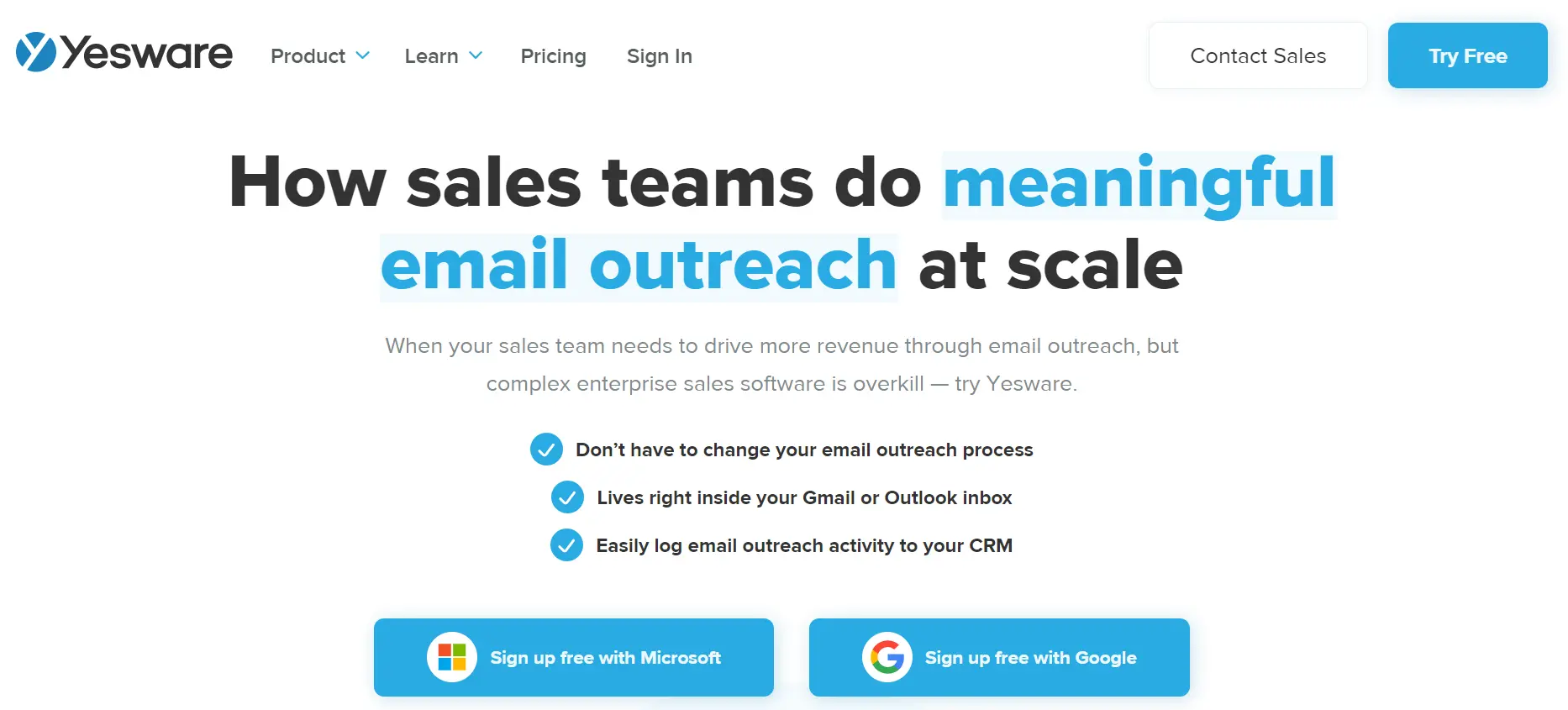
Yesware is one of the best cold emailing tools that makes your outreach efforts easier. With Yesware, you can effortlessly import prospects from CSV files and create successful email campaigns.
Furthermore, Yesware lets you link your Gmail or Outlook account to send emails. Also, you can easily integrate it with Salesforce CRM to make your processes seamless.
Conclusion
We hope you must have got a clear idea about cold email and the topics around it.
Cold emailing is a powerful tool to connect with leads, close deals, and build healthy work relationships. The only place where you can go wrong in your cold emailing journey is by not including the best practices in your email campaign.
Make sure you don’t miss out on the points mentioned in this guide. And if you are looking for a cold emailing tool, do give Saleshandy a try!
Frequently Asked Questions (FAQs)
1. What is a good cold email?
A good cold email is personalized, concise, and provides value to the recipient. It should have a compelling subject line that encourages opening the email. The body should clearly state who you are, why you’re reaching out, and what you’re asking for. The email should end with a clear call-to-action, like “Let’s book a meeting”.
2. Is cold email legal?
Yes, cold emailing is legal in many countries, including the US and Canada, as long as you adhere to certain regulations. In the US, the CAN-SPAM Act provides guidelines for commercial emails, such as including an opt-out option and your physical postal address.
3. What is cold email outreach and why is it important?
Cold email outreach is a strategic way of sending highly personalized emails to individuals or businesses to grab their interest in your product or service.
